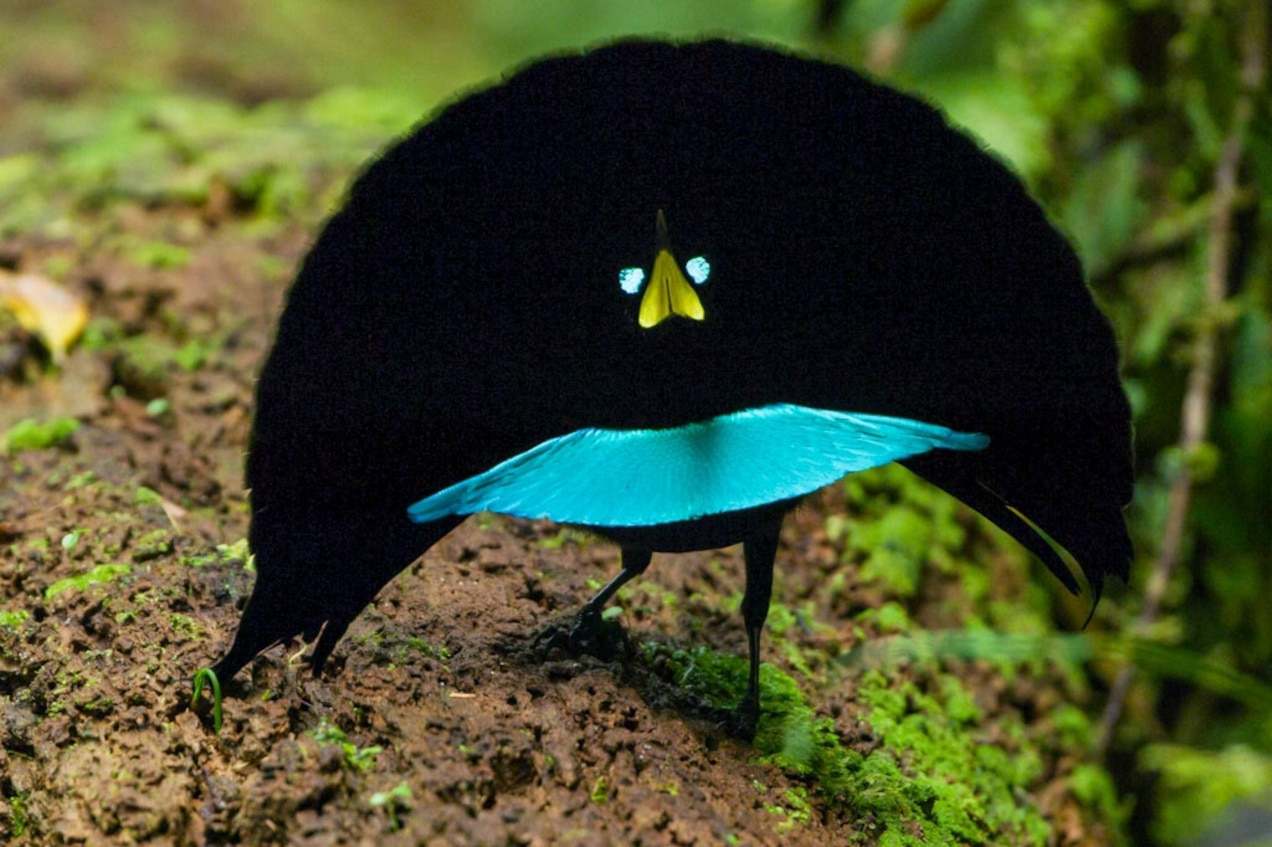A wonder of nature from the holocene (which is right now): Lophorina niedda
A wonder of nature from the holocene (which is right now): Lophorina niedda
1.What Is This?
What do you see in the picture above? Most people see two big glowing eyes, a moon-like shaped body coloured in black and a cyan dress-like area above the two small black feet, along with a huge terrifying mouth. In reality, the only thing that was true about what you see on the picture above is the fact that it has two small legs (and also its colouration). Everything else is false. What you actually see on this picture is a male Lophorina niedda (a paradise bird) performing its mating dance. Can't figure out the bird in this picture? The image below may help you.
I tried my best to make the outline detailed, but the image's quality didn't help. Anyway, the outline does its job, since now you can figure out the bird's real eyes and mouth. Along with that, you can now see that the cyan-coloured area is actually seperate from the wings. This area is actually hanging from the bird's belly.
Dimorphism and Phylogeny
Dimorphism
In the Above Picture, you see another species of the genus Lophorina. The main visible difference is that the shape they form with their wings when they do their mating display is oval and not moon-like. However, the trait I want to talk about is exactly the same in both these two species. You see, in front of our "dancer" there is another bird. You might think that it is a bird of another genus that got its attention caught by the bright colours of our Lophorina, but that's not in case. In reality, that's a female Lophorina, specifically the one this male is trying to Impress with its dance.
This is an example of extreme dimorphism. Usually, when we talk about male birds beeing different than femalesz we think of different colouration. But some birds, including our Lophorina have taken it to the next level by developing weird structures (such as the cyan area). Another bird with extreme dimorphism is Podiceps cristatus
Female(Left) And Male (Right)
This seabird has developed a weird structure on its head, which looks similar to Lophorina's ornament.
That was today's post! Next Time I plan on doing more bird-related stuff. It was really fun to do research for this post. Oh, and, talking about the research I did, I found something interesting while searching for Podiceps cristatus. Have you ever heard of a carrier pigeon? Now get ready for... A Pidgeon Carrier?
See you!







Comments
Post a Comment